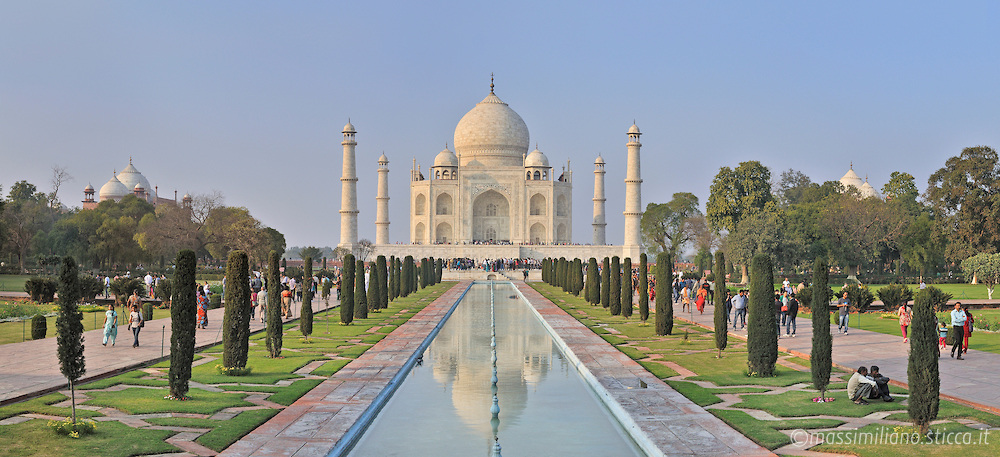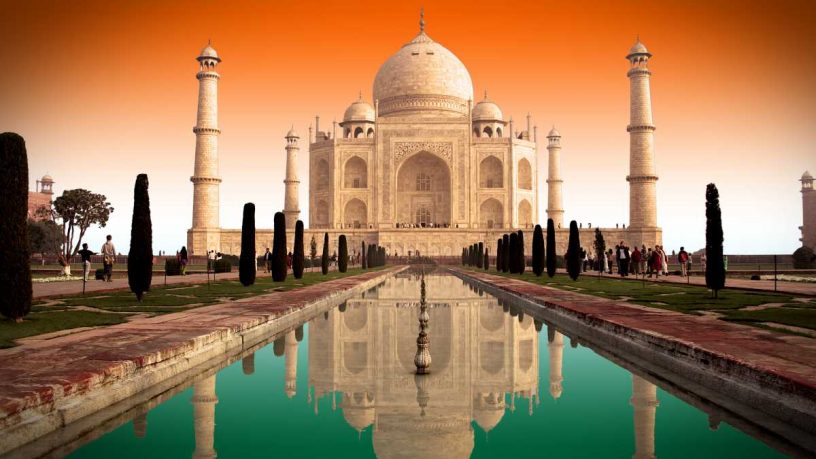It is quite rare that a public garden will stimulate our senses and capture our imagination. Some of them include Villa D-Este, Nishat Baugh, Central Park and the more recent Parc Andre Citroen, which are all magnificent landscape architecture project. Another popular setting would be the Taj Mahal. The Mughal Garden has highlighted the love of Jahangir on gardening and landscape design.
An Overview of the Taj Mahal
The religion of Muslim has introduced different types of building in India. Among them was a structure in octagon form that is designed to house the tomb of prominent personalities. The Taj Mahal is situated on the bank of Yamuna River that is nestled at the expansive Mughal Garden. The structure was constructed by Shah Jahan to honour his wife. The construction started in the year 1632 which was completed at around 1648. Eventually, the cloisters and the outer courtyard have been introduced in 1653.
The Taj Mahal has been considered as the most significant architectural achievement in the state of Indo-Islamic Architecture. The perfect combination of light shadow, convex, and concave, voids, and solids has been recognised as a prime example of architectonic beauty. The domes and the arches of the structure have further magnified the aesthetic appeal of the structure.
The Mughal Garden of Taj Mahal

Taj Garden has become an integral part of the Taj Mahal that serves as the highlight of your visit in this travel destination. It is filled with green leaves, chirping birds, plentiful fruits, and attractive flowers. It is also referred to as the Paradise Garden that covers a total area of 300x300m.
The gardens found in Taj Mahal have followed the concept of 4 which is known as the holiest number on the Islam religion. The place has been divided into 4 blocks which has been adorned with a glorious fountain that serves as the focal point of the garden. There are around 16 flowerbeds in every quarter that divided the raised lanes. There are around 400 flowers found in every flowerbed. The various elements in the garden have been arranged in a symmetrical form. The trees in the garden also carry meaning; for instance, the fruit-bearing tree signifies life and the Cyprus indicated death.
The northern edge of the structure has been occupied in order to create an elegant garden. At the heart of the garden, the elevated marble lotus that has been highlighted with cusped border has intensified the beauty of the garden. The clear image of the Taj Mahal has been reflected into its water. The waterways have also been arranged to in a manner that will give the visitors with a breathtaking view of the mausoleum. It is well-maintained that delivers the natural scene that offers a perfect photo ops.
The balanced proportion of the entire area emanates peacefulness. Shah Jahan has created the entire place to reward the spirit of his wife with a palace. The landscape architecture of Taj Mahal has captured the heart of the visitor and inspired other masterpiece particularly in Europe.

